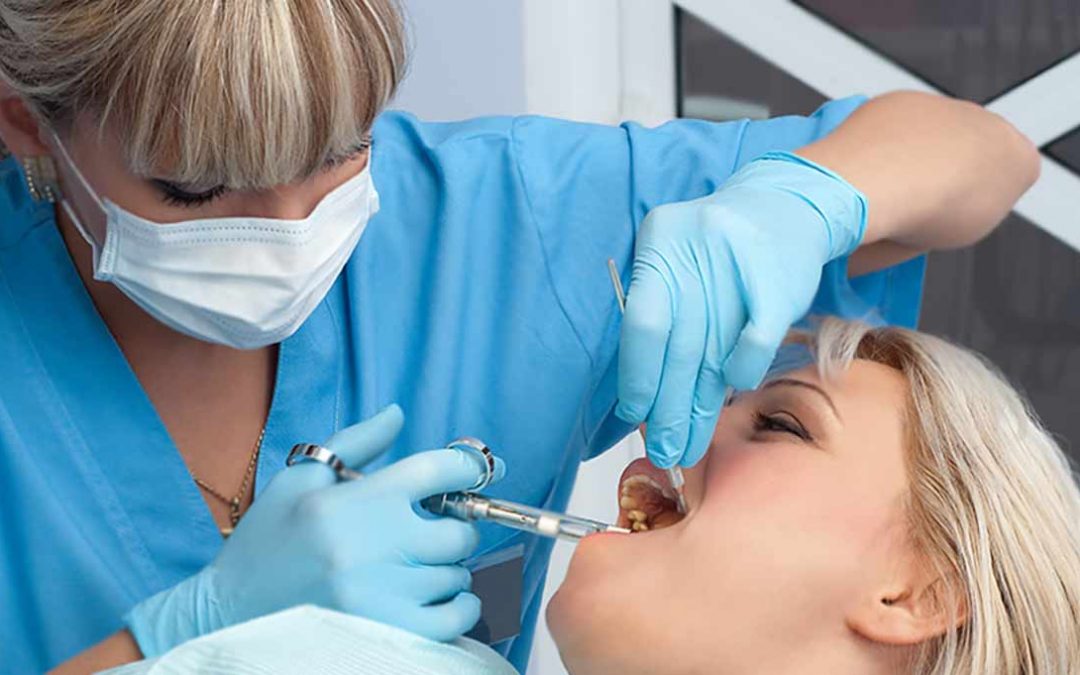Looking for a Pain Free Dentist in Vaughan?
by U Shine Dental � Maple-Vaughan | Oct 2, 2018

Gone are the days of nerve-wrecking dentist visits. The modern age of dentistry is upon us, dental appointments can now be painless using local anaesthetic. Painless dentistry alternatives at U Shine Dental include: Local anaesthesia, general anaesthesia and sedation.
Using these options you can have a more pleasant dental visit. Numbing the area, relaxation and putting you to sleep puts you in control of your dental visit. Choose the option that works best for you.
Desensitizing a specific area of the mouth can lessen or even eliminate pain. There are many variations of local anaesthetic a few examples are:
- Nerve block– local anaesthesia that inhibits pain reception in one area at a time. This is one of the most common.
- Infiltration � A popular local anaesthesia often used in uncomplicated procedures such as restorations is infiltration.
- Electrical nerve blocks � This is a technology that involves using electrical current to block the reception of pain signals; this is a somewhat short lived method.
- Palatal block � This is a shot given into the hard palate when the palate side of maxillary teeth needs to be desensitized.
- Intrapulpal � This is a local anaesthetic that is injected directly into the pulp of the tooth to desensitize the tooth completely.
- Acupuncture � Not very often used, but it is a more holistic method to chemical or electrical blocks. Needles are inserted into specific points to block pain.
- Intraosseous � This is an injection of local anaesthetic given directly into the bone of the tooth. This is reserved for invasive procedures such as root canal therapy.
Sedation is used to relax you in preparation for, or during a dental appointment. The most common types of dental sedation methods are used to help reduce or eliminate pain.
- Oral sedatives: You would take these the night before the procedure, or a short while before the procedure. It depends on the degree of the anxiousness over the dental work. An oral sedative medication that may be used is diazepam. It will reduce anxiety, but does not provide any pain relief. This must be used in conjunction with something else to offer the painless experience.
- Intravenous (IV) sedation: This is used to calm, and it does not provide pain relief, so it too must be administered with a local anaesthetic to get painless dentistry.
- Nitrous oxide sedation: Often called laughing gas. It induces a state of relaxation while reducing anxiety. It can reduce the consciousness of pain, but it is usually administered with a local anaesthetic to achieve truly painless dentistry.
- General anaesthesia is the most powerful form of sedation, placing you unconscious so that the work can be done. You are completely incognizant, and no local anaesthesia is needed because you are asleep and thus will not feel anything.
As you can see, there is an assortment of choices for painless dentistry today. When you are in need of dental procedure, discuss all of your options with Dr. Ranu or Dr. Forman surgeon to make sure you use the method best suited for your specific case.
For more information on sleep dentistry please contact us at 905-303-9355, or click below to request an appointment.
